Fried eggs are one of the most commonly eaten egg dishes in the world, but Medamayaki, a Japanese-style fried egg, is prepared in a slightly different way. Give it a try and compare its flavor to what you are used to.
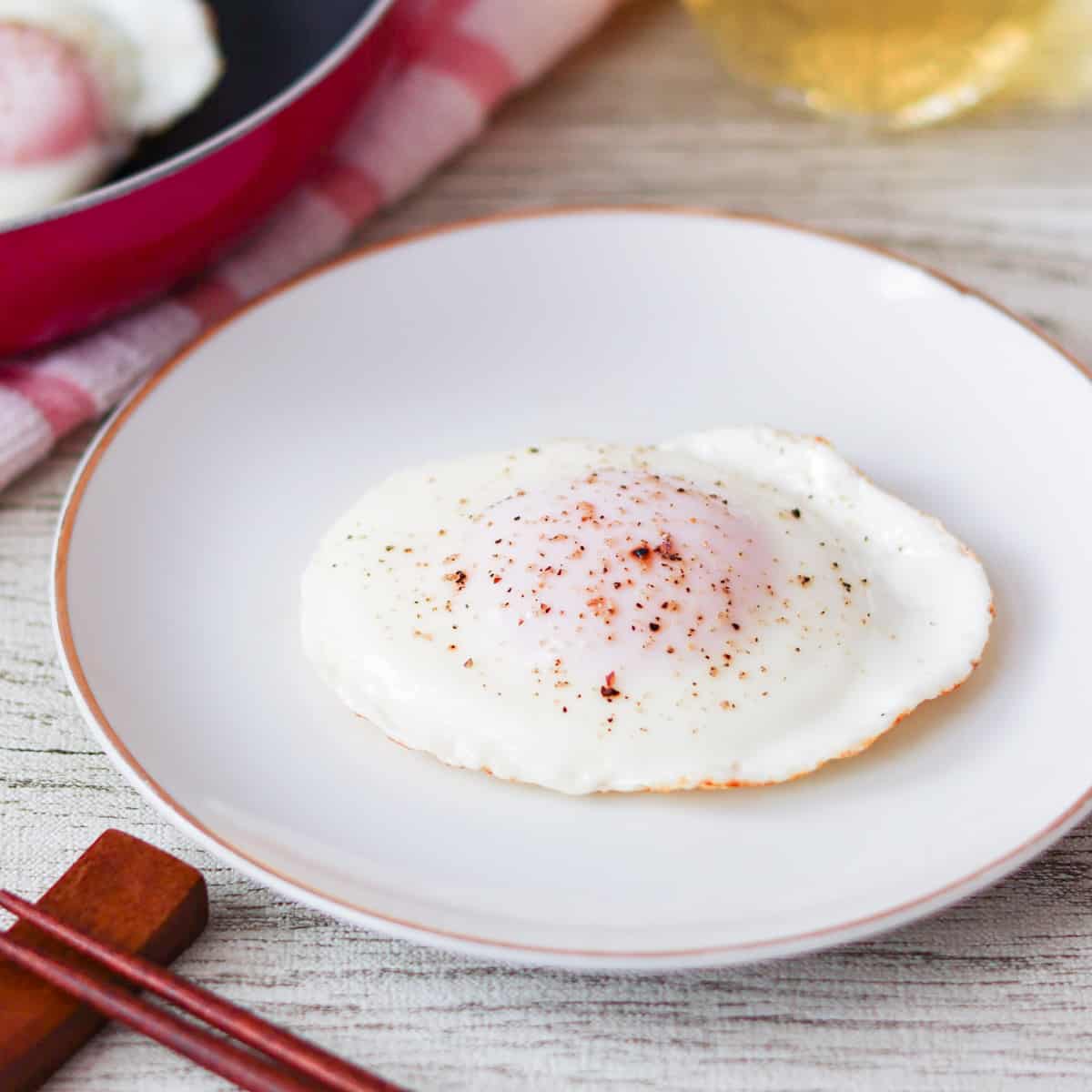
Jump to:
What is Medamayaki?
Medamayaki is the Japanese name for fried eggs, made by cracking eggs into a pan and cooking them. "Medama" means eyeball, and "yaki" refers to frying. In other words, the dish is called "medamayaki" because it resembles an eyeball.
At first glance, it might seem like just fried eggs with a Japanese name, but medamayaki is often prepared using a slightly different cooking method, as explained below.
The Japanese way of making fried eggs
Sunny-side-up, over-easy, and over-medium are the most common ways of preparing fried eggs worldwide. On the other hand, in Japan, frying followed by steaming is the most popular method. In this method, eggs are cracked into a pan, fried, and then steamed with a lid.
In fact, I grew up eating fried eggs prepared this way. Additionally, when I ordered sunny-side-up eggs at some Japanese hotels, they were fried and then steamed. This shows how widespread and popular the steaming method of preparing fried eggs is in Japan.
While perceptions may vary from person to person, many Japanese people generally consider fried eggs to be made by frying and then steaming.
Advantages and disadvantages of the steaming method
There are advantages and disadvantages to cooking fried eggs using the steaming method.
One advantage is that the egg yolk cooks more easily. With sunny-side-up eggs, it takes time to cook the yolk, and with over-easy or over-medium eggs, flipping them takes effort and may break the yolk. In contrast, the steaming method allows the yolk to cook through quickly while keeping its shape.
One disadvantage is that the yolk may develop a whitish appearance. This happens because the top of the yolk is exposed to steam. Additionally, since a lid is used during the cooking process, there is one more item to wash.
In Japan, fried eggs are commonly eaten for breakfast, so the steaming method has become a popular way to prepare them quickly, especially on busy mornings.
How egg consistency changes with heat and time
The following shows how egg consistency changes based on heat level and steaming time when eggs are placed straight from the refrigerator into a heated pan:
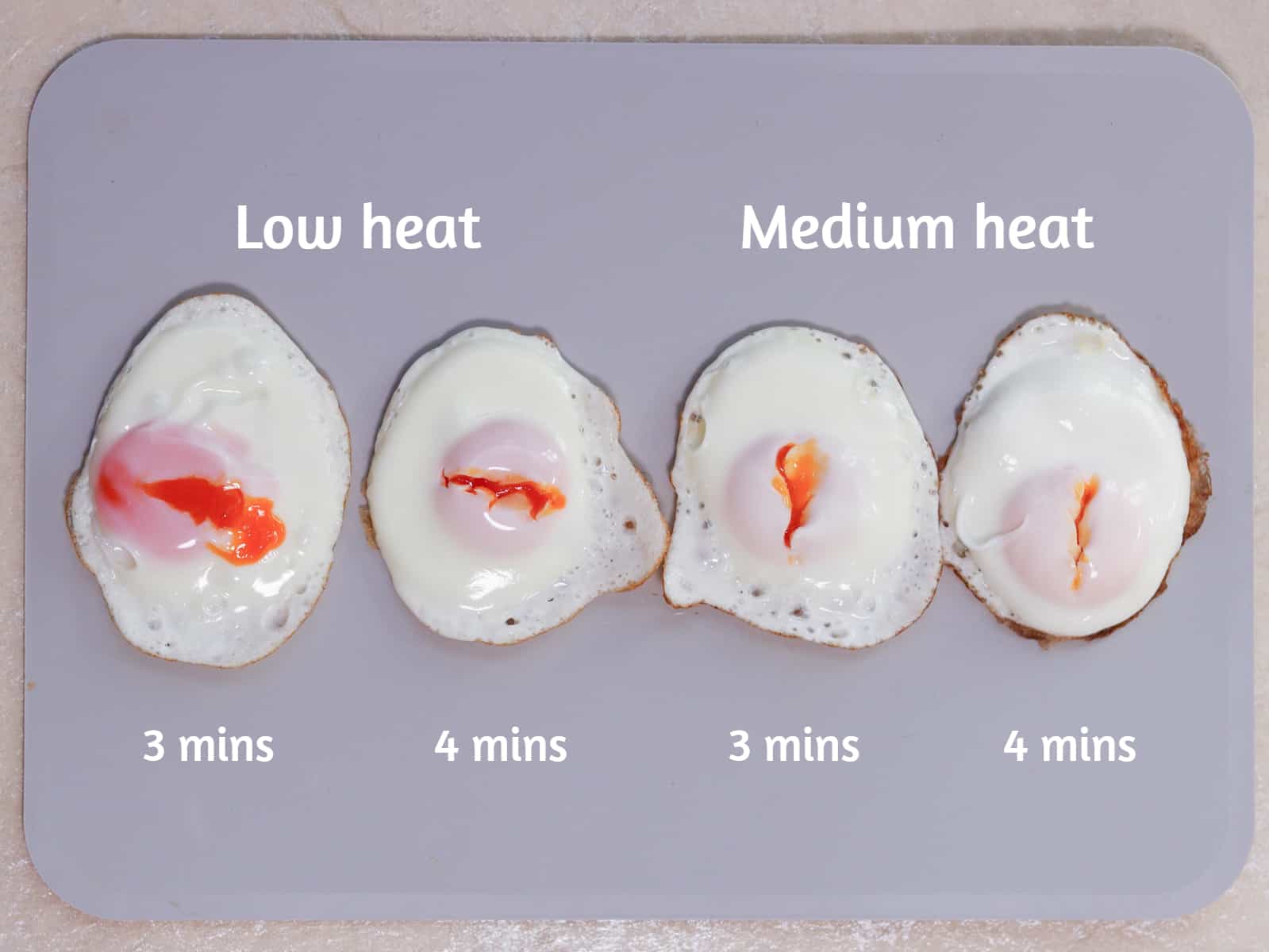
3 mins on Low heat: The yolk flows out when cut.
4 mins on Low heat: The yolk barely flows out when cut, but it is still runny.
3 mins on Medium heat: The yolk flows out slightly when cut.
4 mins on Medium heat: The yolk doesn’t flow out when cut and is almost fully cooked.
Eggs available in Japan are safe enough to be consumed raw, so fried eggs are often prepared in a particaly cooked state. Depending on your preference or the safety of eggs available in your area, cook them until they reach your desired level of doneness, being careful to avoid the risk of food poisoning.
Condiment options
In Japan, fried eggs are seasoned with a variety of condiments.
Salt and pepper are the most common choices, but some people like to add soy sauce, Japanese Worcestershire sauce, tonkatsu sauce, ketchup, or shichimi togarashi (Japanese seven-spice chili powder).
This recipe uses salt and pepper, but if you are interested in giving your fried eggs a Japanese twist, I highly recommend adding a small amount of soy sauce after cooking.
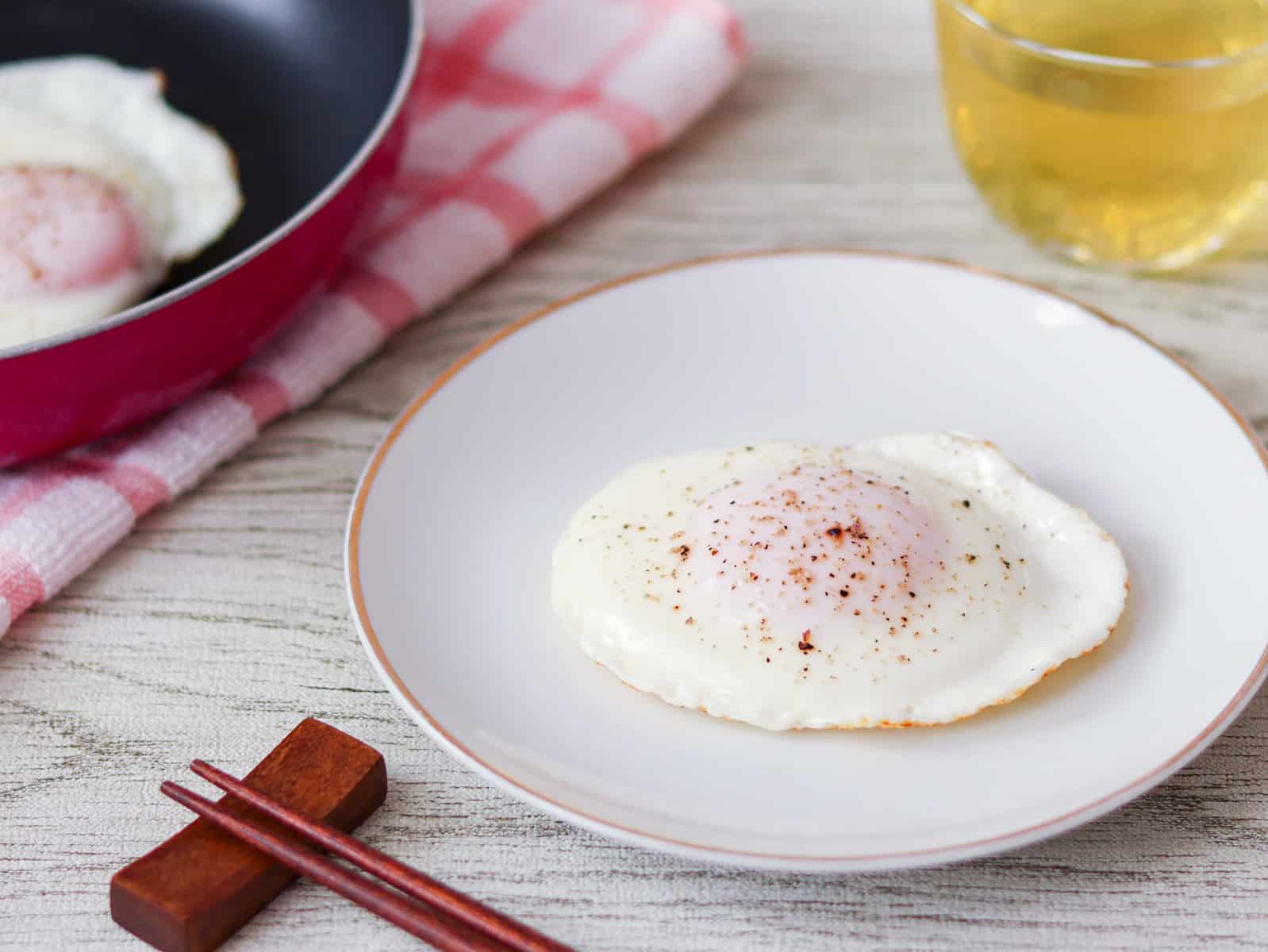
📋Step-by-step recipe
Ingredients
- 1 egg
- 1 tsp neutral oil or butter
- pinch of salt
- pinch of ground black pepper
Instructions
🕒 Total: 5 mins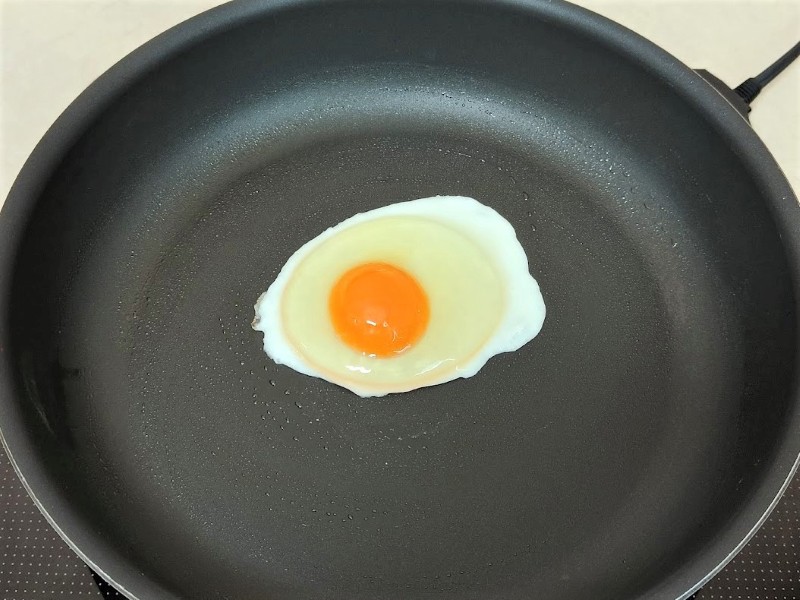
Step 1
Heat oil or butter in a pan over medium heat. Once the pan is hot, crack the egg into it.
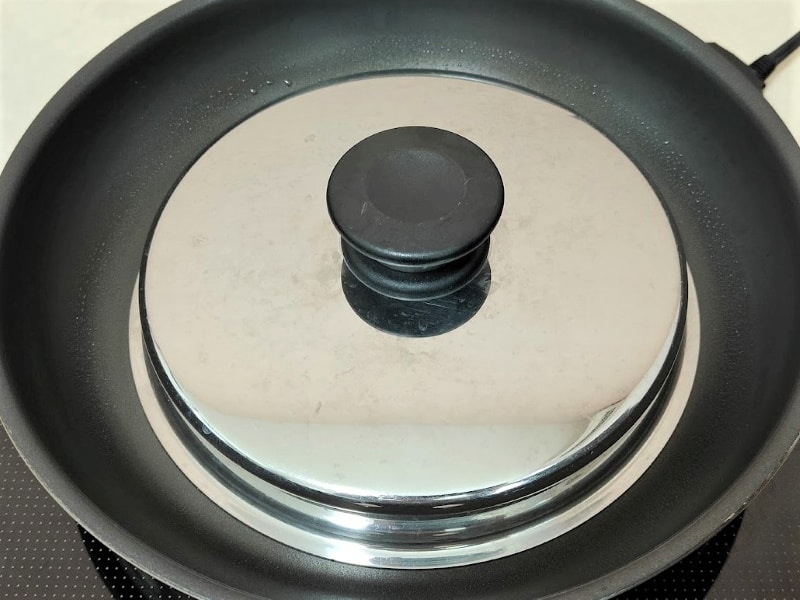
Step 2
When the egg white begins to set, cover the pan. Reduce the heat to low and let it steam for 3 minutes, or until it reaches your desired level of doneness.
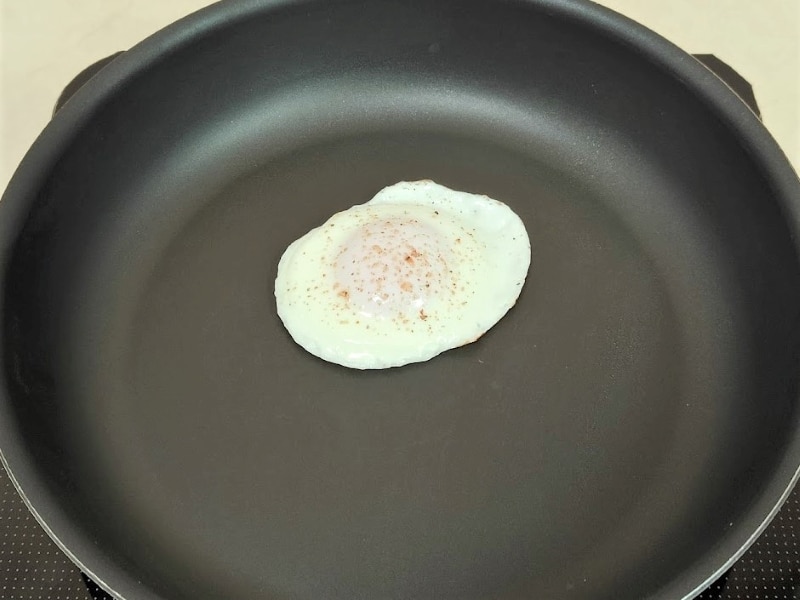
Step 3
Remove the lid and sprinkle salt and pepper over the egg (or add your preferred condiments after serving).
To store
This dish is not suitable for storage, so it is best to eat it as soon as possible after making it. Storing it could allow Salmonella bacteria to grow, increasing the risk of food poisoning.
Cooking tips
- Crack the egg as close to the pan as possible. This helps prevent the yolk from breaking.
- It is not necessary to add water when steaming eggs. Adding water dilutes the flavor. The only moisture needed for steaming comes from the eggs themselves.
A pro tip for richer flavor
Although it is not included in the recipe due to the extra effort involved, you can enhance the flavor of your fried eggs with one additional step: simply crack the eggs into a fine-mesh sieve first. This drains off the watery part of the egg whites, making the eggs taste richer.
This technique is commonly used in high-end Japanese hotels. If you prioritize flavor over convenience, I recommend giving it a try.
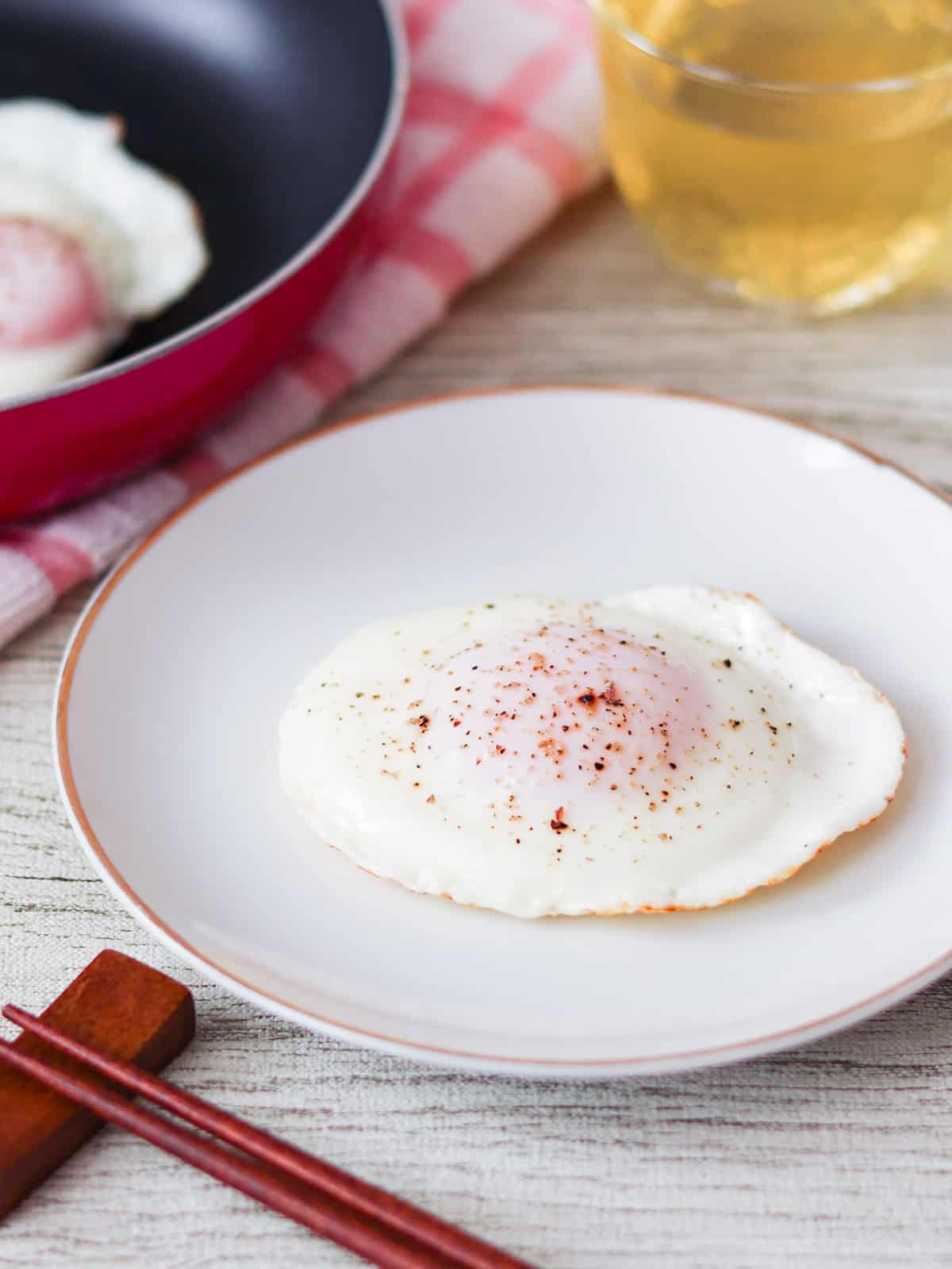
If you try this recipe, I’d love to hear what you think. Please consider leaving a review and star rating in the comments below. If you enjoyed it, I’d really appreciate it if you shared it with your friends.
More Japanese egg recipes you'll probably love
Recipe card

Medamayaki (Japanese Style Fried Eggs)
Ingredients
- 1 egg
- 1 tsp neutral oil or butter
- pinch of salt
- pinch of ground black pepper
Instructions
- Heat oil or butter in a pan over medium heat. Once the pan is hot, crack the egg into it.
- When the egg white begins to set, cover the pan. Reduce the heat to low and let it steam for 3 minutes, or until it reaches your desired level of doneness.
- Remove the lid and sprinkle salt and pepper over the egg (or add your preferred condiments after serving).
Notes
- This dish is not suitable for storage, so it is best to eat it as soon as possible after making it. Storing it could allow Salmonella bacteria to grow, increasing the risk of food poisoning.

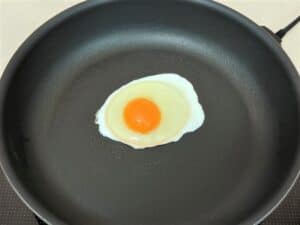
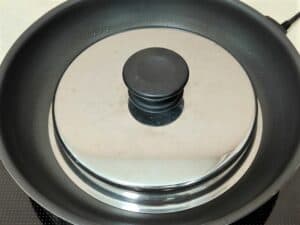
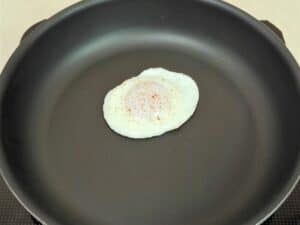

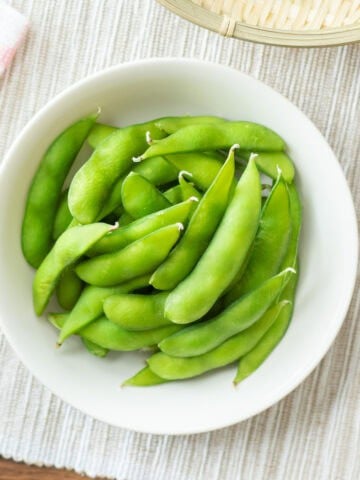

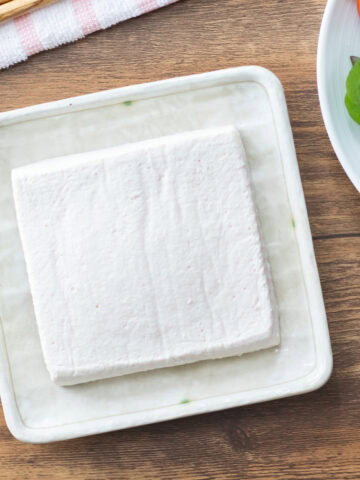
Leave a Rating and a Comment